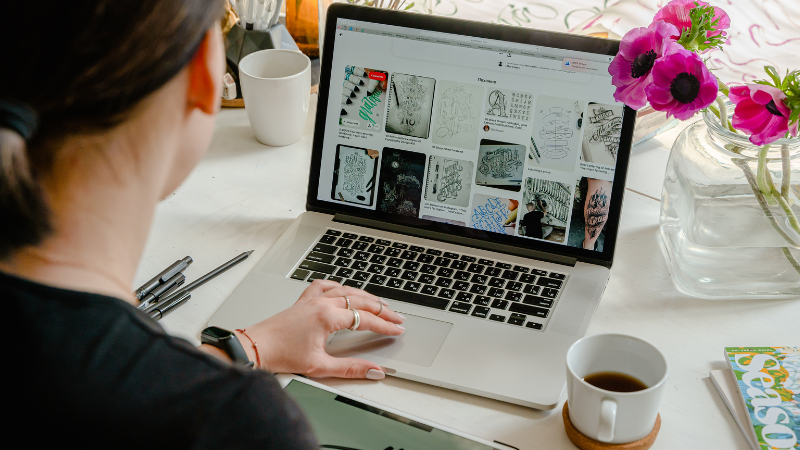How to Keep Your Dog Entertained When You’re Working From Home
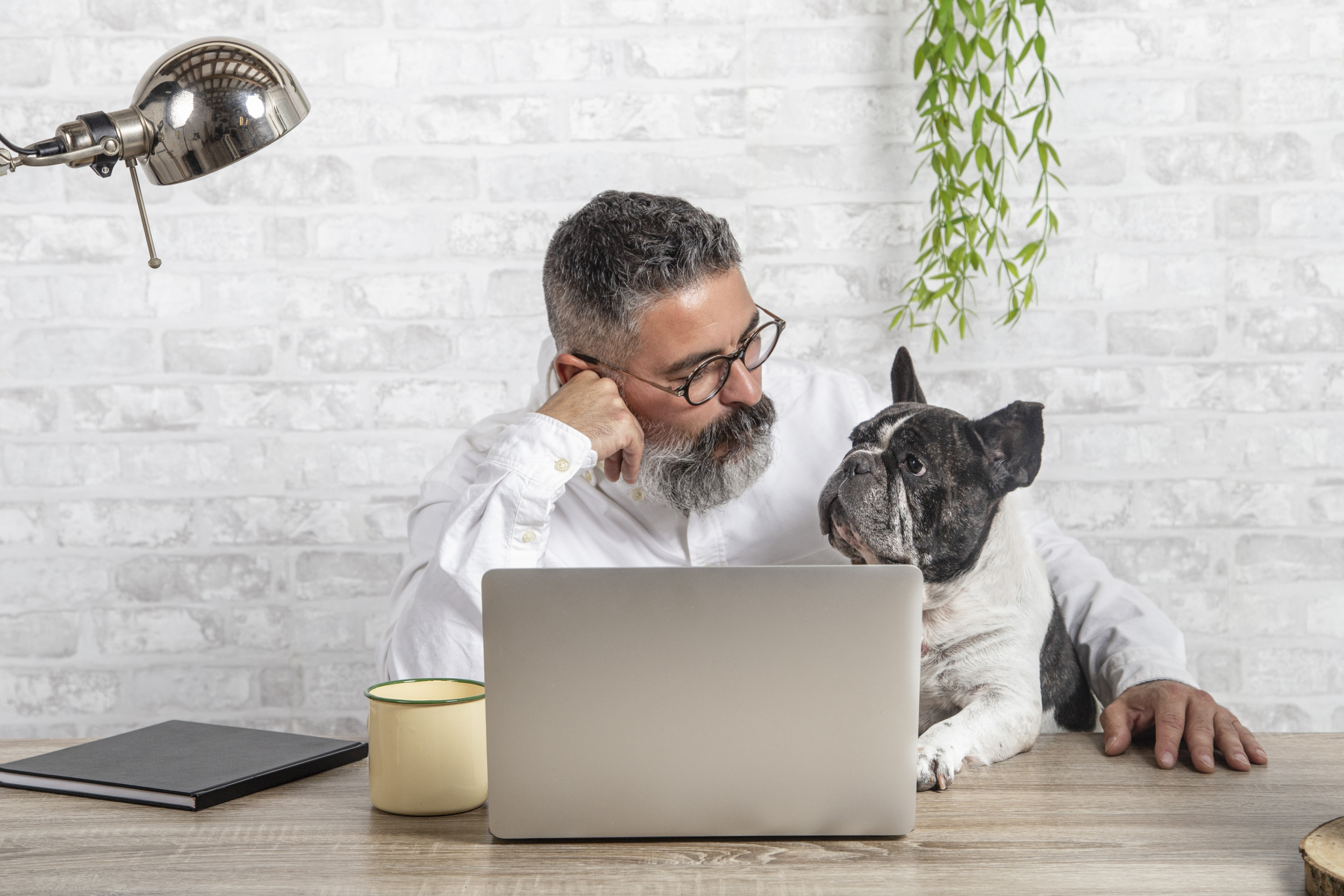
Working from home has become the norm for millions of people around the world since the start of the coronavirus pandemic. For some, this has also meant spending more time with their beloved dogs.
However, it can be tricky to manage virtual meetings and vital deadlines when you share your home office with an over-excited hound who’s desperate for your attention.
Here, animal behavior experts offer their advice on how to keep your furry friend occupied so you can get on with some work.
Get Your Dog to Exercise
If your dog tends to interrupt you during video calls, give it some exercise and a meal before you sit down at your desk for an important meeting, advised Pamela Reid, an animal behaviorist and vice president of the American Society for the Prevention of Cruelty to Animals’ behavioral sciences team.
Zazie Todd, the author of Wag: The Science of Making Your Dog Happy, also recommended giving your dog some attention if you’ve got a call with the boss coming up. “That way they are more likely to settle while you are at work,” she told Newsweek.
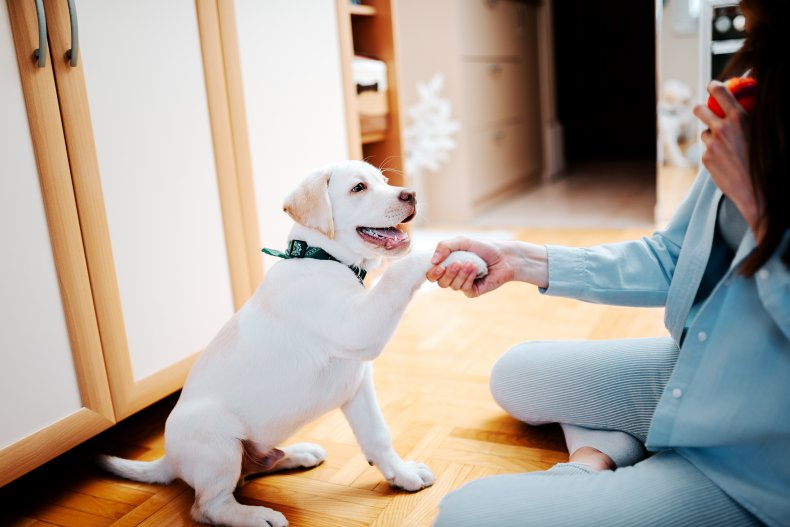
iStock/Getty Images Plus
You can take the dog for a long walk, do training exercises to teach it commands and tricks, or any other activity that it enjoys.
Linda Michaels, a dog psychologist and author of Do No Harm Dog Training and Behavior Handbook, told Newsweek: “Dogs love predictability and routines they can count on.”
So, it’s good to stick to your workday routine, but build in regular breaks for a walk, a snuggle or a quick game of fetch with your dog.
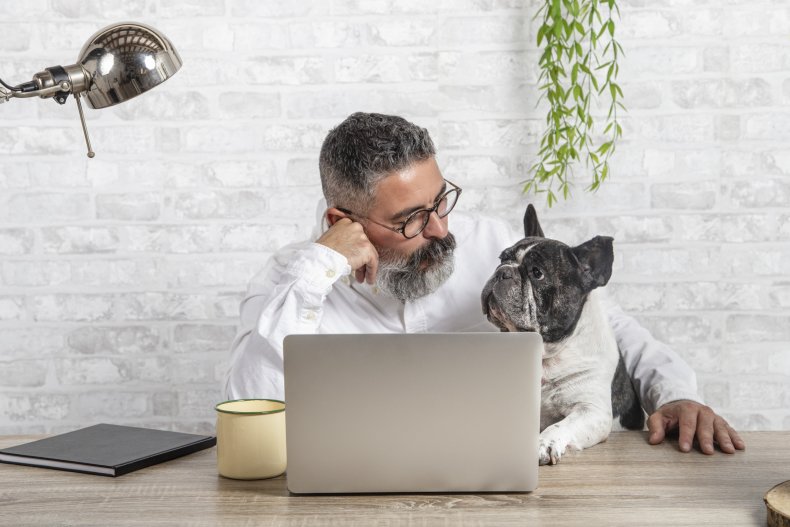
iStock/Getty Images Plus
Distract the Dog With Food Puzzles
Just before your work meeting—and after a bit of exercise with your pet—give the dog a food puzzle toy, such as a stuffed Kong. “This gives them something to do” and, given that they’ve just done some physical activity, “it’s quite likely they will take a nap after that,” said Todd.
Reid suggested stuffing a puzzle feeder with plain yogurt or peanut butter. “Once your dog gets good at using a puzzle toy, you can freeze it so it takes even more time for your dog to get all the food out,” she told Newsweek.
If you don’t have a puzzle feeder, you can place food in household items such as cardboard boxes, paper towel rolls or plastic jugs with food-sized holes cut in them, she said.
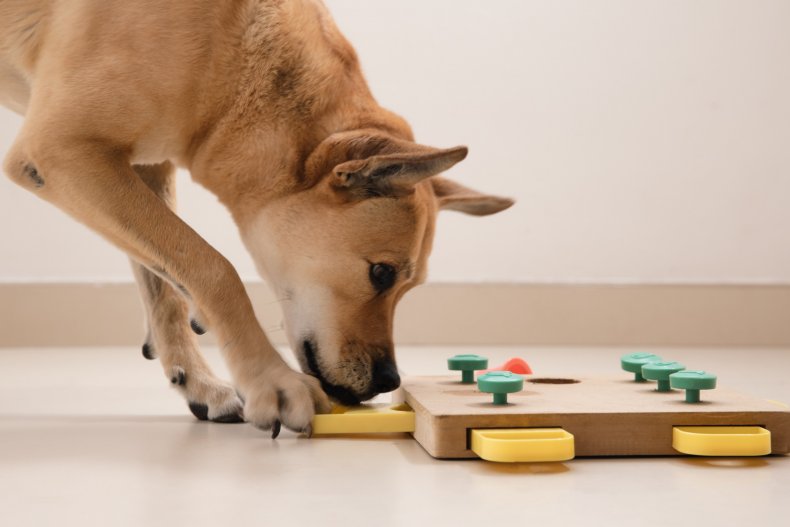
iStock/Getty Images Plus
Send Your Pet on a Scavenger Hunt
Your dog might prefer “hide and seek nose-work games” to a food puzzle, according to Michaels.
You can do this indoors by laying nuggets of food along a trail for your dog to follow.
If you have a secure yard, “simply toss your dog’s kibble in the grass for him to search for his meal,” said Reid.
This type of problem-solving activity is fun for your dog and gives it a job to do while you get on with yours, Michaels added.
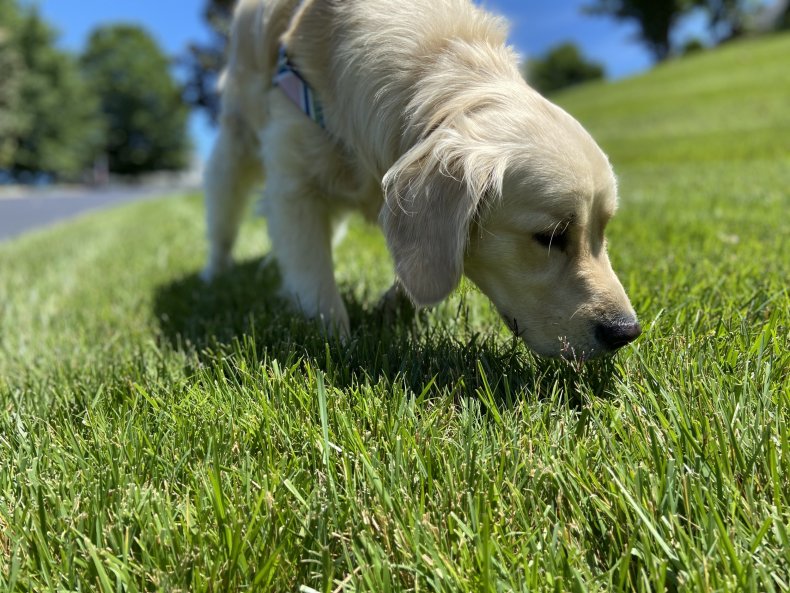
iStock/Getty Images Plus
Create a Dog Sensory Space Outdoors …
If you have a backyard, you can create a relaxing “sensory garden” for your pup to “destress with dog-friendly landscaping” for exploration and exercise, said Michaels. You can set up a digging pit, fountain or simply a kids’ paddle pool for your dog and supervise its activities through a window or camera while you work.
… Or an Enriched Environment Inside
If your dog has to stay inside, Michaels suggested creating a spacious, contained “enhanced environment” using baby gates. Fill the space with “high value items” such as food and toys, plus some of your personal belongings to provide comfort (such as an old sweaty T-shirt) and an orthopedic dog bed.
Be sure to provide a stream of fresh air with a view of the outdoors from this contained space. Some dogs also like to watch television, while research has found that reggae is the most calming music for dogs, she said.
“Practicing with an enriched environment can also help prevent separation anxiety should you go back to the office,” Michaels added.
Arrange Play Dates and Plenty of Toys
Most dogs love playing, whether it’s alone or with other people or dogs, and whether it’s with toys or without, said Michaels. Arrange to have another dog come over for a play date in your yard. You can bring your laptop outside to keep an eye on them while you’re working.
It’s also important to create plenty of opportunities for your dog to engage in the natural behaviors of foraging and chewing, with items such as bully sticks or snuffle mats.
Reid said: “For avid chewers, you can purchase all sorts of interesting and easily digestible chews online to keep at your desk should your dog disrupt your virtual meeting.”
Be sure to supervise your dog when you give them any new chews or other toys to make sure they’re safe.
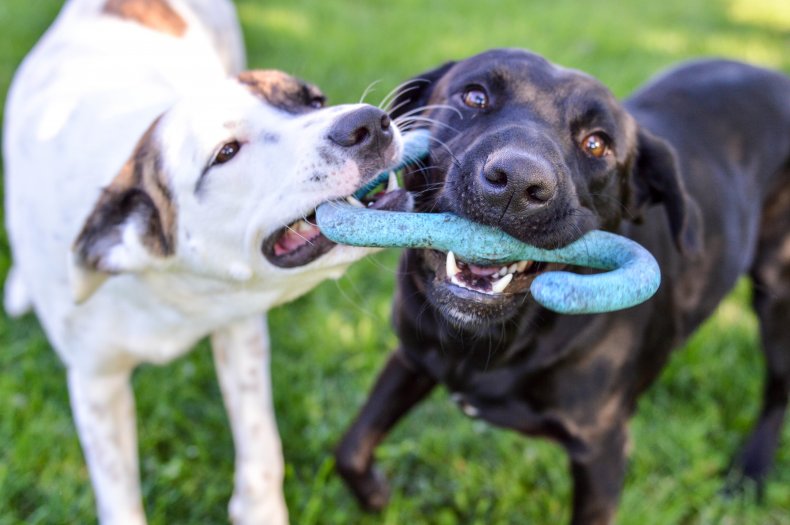
iStock/Getty Images Plus
Have a Friend Walk Your Dog
If you’re short on time and swamped with work, Todd recommends getting a dog walker or friend to take your pet out for a walk.
You could even find a dog adventure expert to take your pooch out for a “sniffari,” providing novelty as well as exercise, Michaels said.
“Allowing your dog to express a range of behaviors typical of their species staves off boredom. Enrichment gives choice and control, helping your dog to thrive and cope with your work schedule—making you feel better too,” she added.
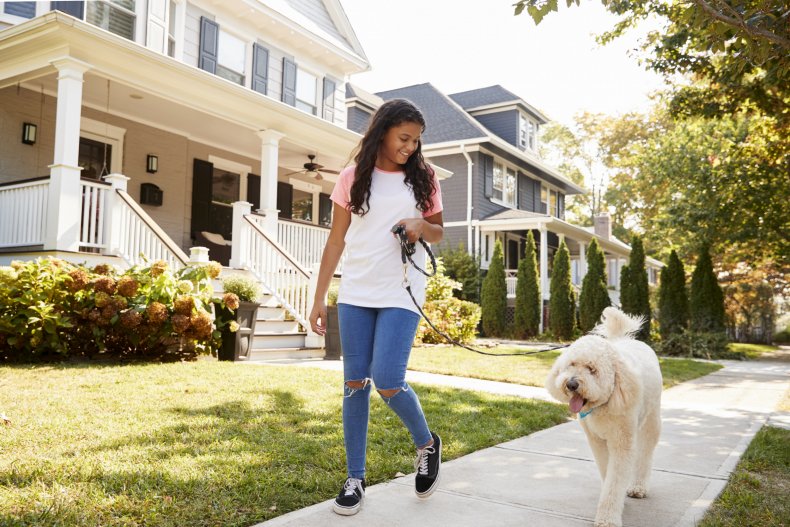
iStock/Getty Images Plus
Training Your Dog for Your Return to the Office
After months of together time, your dog may be left feeling confused and lonely when you head back to the office. Here are Reid’s tips to help pets with the transition and avoid separation anxiety:
- If you know you will be resuming a rigid schedule, adopt that schedule while you’re still at home. Plan walks and meals for the same times as they will be when you’re back at your workplace.
- Give your pet “practice” with short periods of alone time every day. Go for a stroll or do some yard work while leaving them in the house, so the transition is not so abrupt and stressful. Gradually increase the time you’re away from home to prepare your pet.
- Your dog may have got used to midday play sessions or walks with you. Ramping down that exercise and interaction because of schedule changes could leave them with pent-up energy. Switch to playtimes that fit your new schedule to help your dog adjust.
- Rotate your dog’s toys to keep them relatively novel and interesting. Interactive toys or healthy chew toys can keep your dog busy while you’re away at work.
- Leave on soothing music or the television for auditory or visual stimulation.
- While the family is away, you want your dog feeling safe and secure at home. Be sure to look out for signs of anxiety as you prepare to depart, such as nervous pacing and panting, vocalizing or trying to leave with you. To address your dog’s distress, consider contacting an animal behaviorist, veterinary behaviorist or dog trainer for advice.
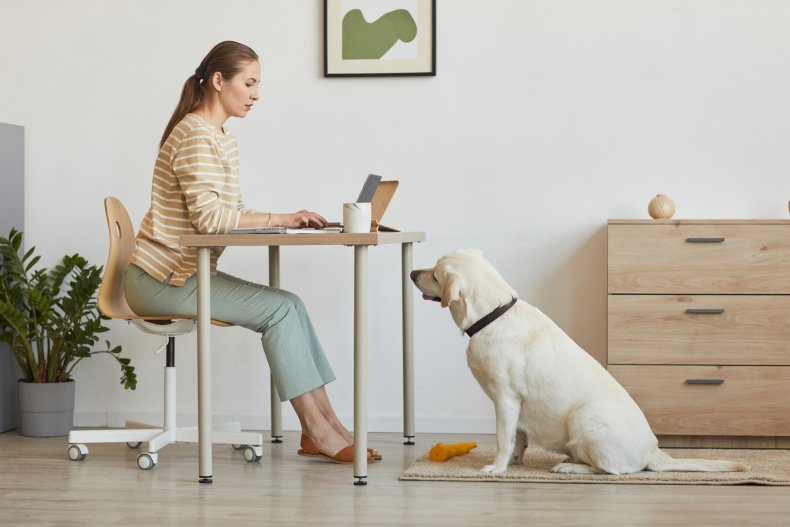
iStock/Getty Images Plus




